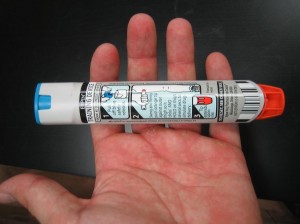Dairy allergy is considered as a common problem among infants but most of these children usually outgrow the allergy once they reach 5-6 years old. Nevertheless, adults can also develop dairy allergy at a later age. Individuals who are affected by this allergy are not even aware that they have one since dairy is almost present in every food especially processed foods. Fortunately, there are certain symptoms that can indicate a dairy allergy.
Dairy allergy or lactose intolerance
Initially, dairy allergy is not the same as lactose intolerance. It is important to note that lactose intolerance involves the absence of the enzyme lactase that is required to break down lactose present in dairy foods. As for dairy allergy, the immune system of the body recognizes casein and whey proteins as foreign invaders and releases histamine and antibodies to eliminate the threat.
There are a number of individuals who are lactose intolerant but they can utilize a lactose aid to help with the digestion of the dairy products. Occasionally, lactose intolerance can eventually progress to a dairy allergy due to the damage incurred to the gastrointestinal tract.
Symptoms of dairy allergy
The symptoms of dairy allergy typically include hives, skin rashes, eczema, nasal congestion, constipation and even anaphylactic shock in severe cases. The symptoms of lactose intolerance include bloating, stomach cramping, nausea, diarrhea and headaches. Always remember that intolerance will manifest itself through the gastrointestinal tract while dairy allergy involves the allergic skin reactions.

What are the causes?
Dairy allergy is usually triggered by the rejection of casein and whey in the body. These are the proteins present in dairy products. Casein is the curd that remains once milk is allowed to sour while whey is the water-based byproduct of the souring process.
An individual who is lactose intolerant for a long time can develop dairy allergy. Once dairy products are consumed and not properly broken down, the gastrointestinal tract is damaged. As a response of the body to prevent further damage, it will send antibodies and histamine to the stomach every time dairy is consumed.
How to determine if it is actually dairy allergy
The best way to determine if an individual has dairy allergy is to go through an elimination diet that will span for two weeks in which all dairy products are avoided. Dairy products include anything that has its original source such as milk from cow. Make sure that the individual will check all the labels on processed foods.
When avoiding dairy foods, the individual should note down if the symptoms disappear. If they do vanish, the individual might have intolerance or allergy. The doctor will also perform an allergy test to determine if the individual is allergic or intolerant. If you want to learn more about allergy testing, click here.
Treatment for dairy allergy
Individuals who have dairy allergy should simply avoid dairy products. The doctor can provide good food substitutes since dairy is the main source of calcium. Supplements are also recommended as well as foods that are high in nutrients similar to those present in dairy.
